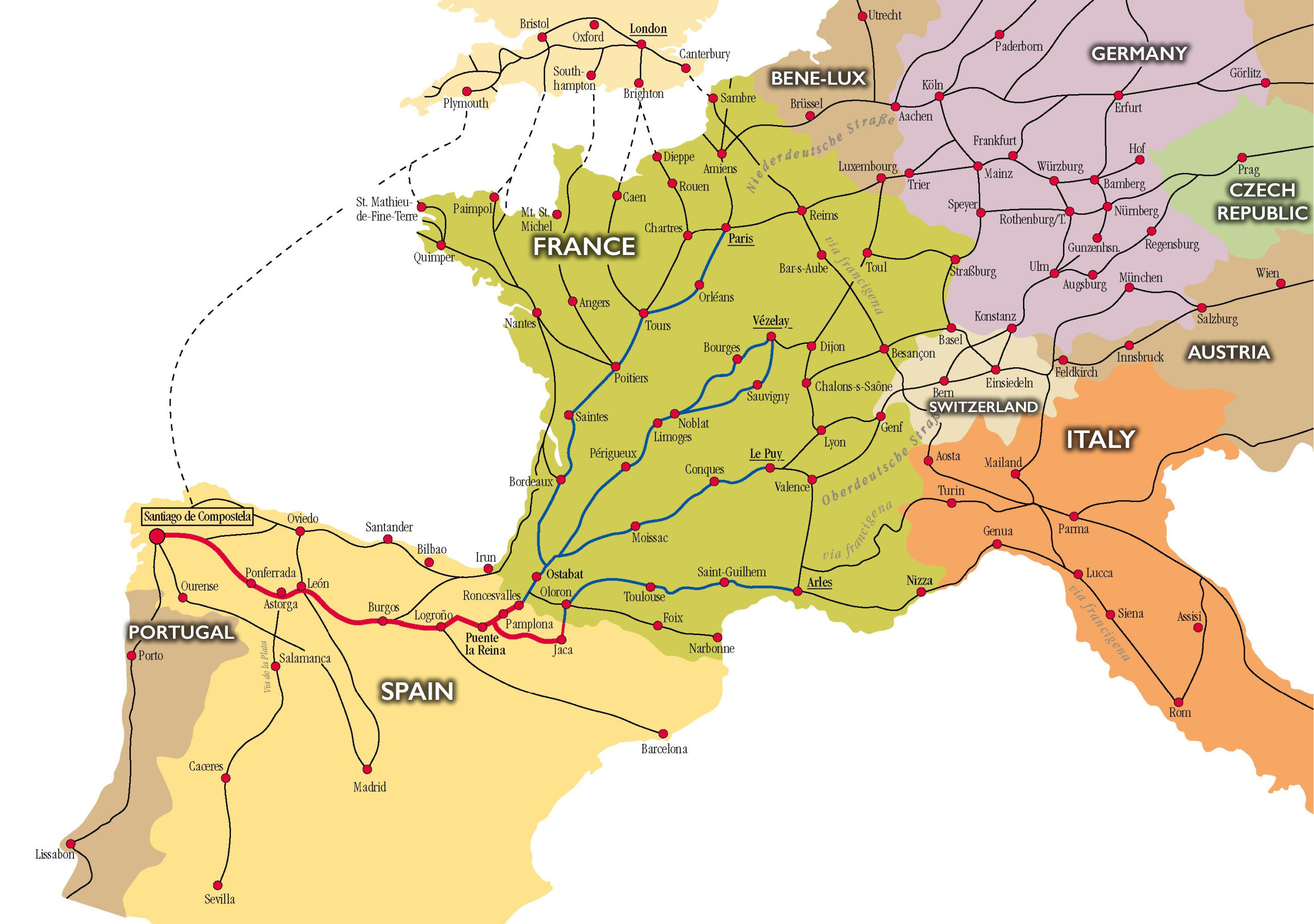Following the Footsteps of Faith
From the earliest days of Christianity, believers have journeyed to sacred places to deepen their faith, honor the saints, and encounter the presence of God in the landscapes of salvation history. These ancient Christian pilgrimage routes - stretching across Jerusalem, Asia Minor, Greece, and Rome - form a living map of the Gospel itself.
Even today, centuries later, they continue to teach us profound lessons about faith, perseverance, and the eternal call to “come and see” (John 1:39).
✝️ The Birth of Christian Pilgrimage
Christian pilgrimage began not as a grand tour, but as an act of humble devotion. In the 4th century, after Emperor Constantine legalized Christianity, believers were finally able to visit the Holy Land freely.
The most famous early pilgrim, St. Helena, the mother of Constantine, traveled to Jerusalem around 326 A.D. and is credited with discovering the True Cross and identifying key sites of Christ’s life and Passion - including Golgotha, the Holy Sepulchre, and Bethlehem.
These discoveries transformed Jerusalem into the spiritual heart of the Christian world, fulfilling the psalmist’s words:
“Our feet are standing within your gates, Jerusalem.”
- Psalm 122:2
🕍 The Roads of the Apostles
Long before formal pilgrimages, the Apostles themselves were the first Christian travelers - carrying the Gospel to the ends of the earth. Their missionary journeys became the foundation of the first sacred routes:
- St. Paul’s Journeys - Tracing Paul’s footsteps from Antioch to Ephesus, Philippi, Corinth, and Rome reveals the geographical expansion of early Christianity (Acts 13-28). Many modern pilgrimages follow this route, connecting believers with Paul’s courage and faith amid trials.
- The Via Egnatia - This ancient Roman road connected Thessalonica, Philippi, and Neapolis, key cities where Paul preached (Acts 16-17). The same stone paths once walked by the Apostle still wind through the mountains of northern Greece today.
- The Way to Rome - Known as the Via Francigena, this route linked Canterbury in England to Rome, where Sts. Peter and Paul were martyred. For centuries, Christians journeyed to the tombs of the Apostles to strengthen their faith and seek spiritual renewal.
🕊️ Jerusalem: The Heart of Pilgrimage
The city of Jerusalem remains the most sacred destination for Christians worldwide. Here, pilgrims can visit:
- The Church of the Holy Sepulchre, marking the place of Christ’s Crucifixion and Resurrection (John 19-20).
- The Mount of Olives, where Jesus ascended into heaven (Acts 1:9-12).
- Bethlehem, the birthplace of our Savior (Luke 2:4-7).
- The Jordan River, where Jesus was baptized (Matthew 3:13-17).
Each step through these holy sites is a journey through the Gospel itself - a physical prayer that connects heaven and earth.
🕯️ Pilgrimage in the Byzantine Era
By the 6th century, Christian pilgrimage had become an established part of Orthodox life. Monasteries and waystations were built across the Holy Land, Sinai, and Asia Minor to welcome travelers. The Byzantine Empire developed a network of safe routes, many of which are still visible today.
Pilgrims often carried home small flasks of holy oil or water - called ampullae - as blessings and reminders of their journey. Icons and relics also became central to pilgrimage devotion, linking distant believers to the living presence of the saints.
🌍 Lessons for Today’s Pilgrims
Though our modern journeys are different, the lessons of these ancient pilgrimages remain timeless:
- Faith Requires Movement - The road itself transforms us. Like Abraham, who “went out, not knowing where he was going” (Hebrews 11:8), pilgrimage calls us to trust God with every step.
- The Church Is Universal - Walking ancient routes reminds us that the Christian faith transcends nations and centuries - uniting believers from Jerusalem to Miami.
- Simplicity and Prayer - Pilgrimage strips away distractions, teaching humility, gratitude, and wonder.
- The True Destination Is Christ - Every road, every shrine, every sacred mountain leads back to Him: “I am the way, and the truth, and the life” (John 14:6).
🕊️ The Pilgrimage of the Heart
While not all can travel to the Holy Land or walk the roads of the Apostles, every Christian life is a pilgrimage - a journey toward God. Through prayer, repentance, and love, our hearts become the true Holy Land where Christ dwells.
As St. Augustine wrote:
“You have made us for Yourself, O Lord, and our hearts are restless until they rest in You.”
Whether walking ancient roads or simply lighting a candle at St. Sophia Cathedral in Miami, each act of devotion continues the sacred journey begun by the first believers nearly two thousand years ago.
📖 References
- The Holy Bible (Acts 13-28; John 1:39; John 14:6; Luke 2:4-7; Matthew 3:13-17; Psalm 122:2; Hebrews 11:8)
- Egeria’s Pilgrimage Journal (4th century)
- The Life of St. Helena (Eusebius, Vita Constantini)
- The Oxford Dictionary of the Christian Church (3rd edition)
- Byzantine Pilgrimage Art and Culture - Dumbarton Oaks Studies

